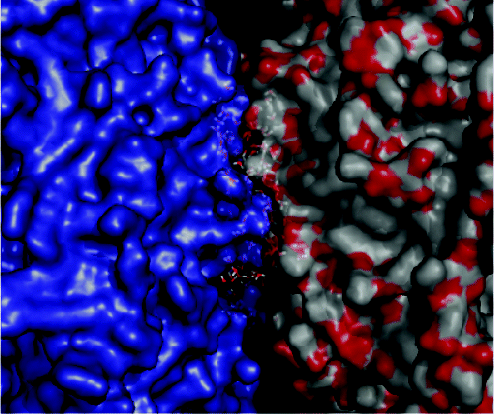Peter M. Kasson, Erik Lindahl, and Vijay S. Pande.
Journal of the American Chemical Society (2011) Epub 25 Feb.

SUMMARY.
Building on our previous simulations of membrane fusion, we have used the power of Folding@home to systematically analyze the fusion reaction between two vesicles and the molecular nature of water in this reaction. For purposes of computational tractability, many approaches neglect the detailed structure of water for large membrane simulations. In this case, we show that this detailed structure affects both the thermodynamics and the dynamics of the fusion reaction. These results have important implications for how we should perform vesicle fusion simulations; they also give a new example of structured water between two flexible hydrophilic interfaces. This water structure may be important in a number of cell-cell interactions.
ABSTRACT.
Membrane interfaces are critical to many cellular functions, yet the vast array of molecular components involved make the fundamental physics of interaction difficult to define. Water has been shown to play an important role in the dynamics of small biological systems, for example when trapped in hydrophobic regions, but the molecular details of water have generally been thought dispensable when considering large membrane interfaces. Nevertheless, spectroscopic data indicate that water has distinct, ordered behavior near membrane surfaces. While coarse-grained simulations have achieved success recently in aiding understanding the dynamics of membrane assemblies, it is natural to ask, does the missing chemical nature of water play an important role? We have therefore performed atomic-resolution simulations of vesicle fusion to understand the role of chemical detail, particularly the molecular structure of water, in membrane fusion and at membrane interfaces more generally. These membrane interfaces present a form of hydrophilic confinement, yielding surprising, non-bulk-like water behavior.
